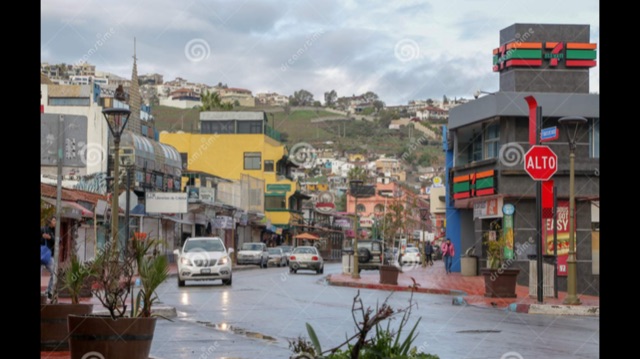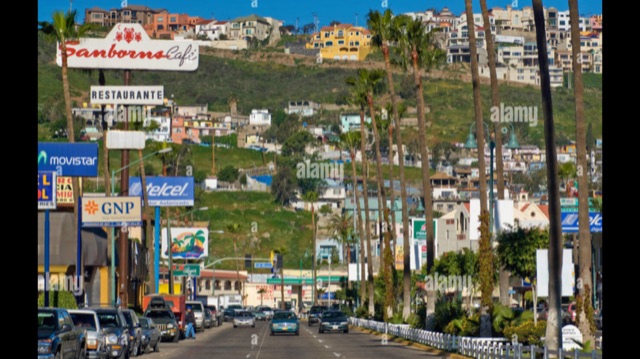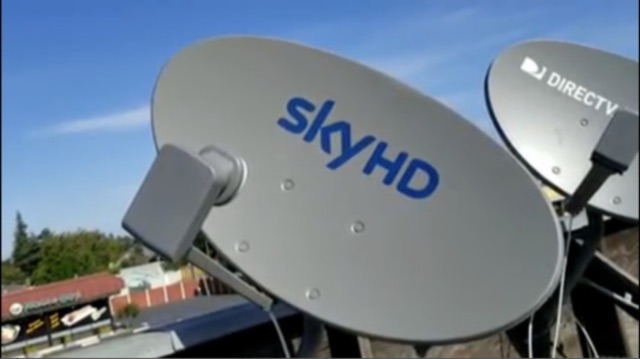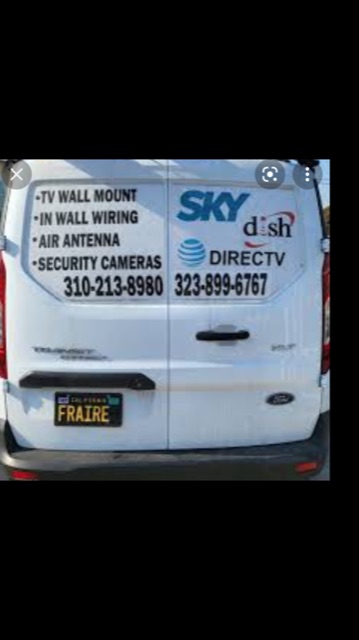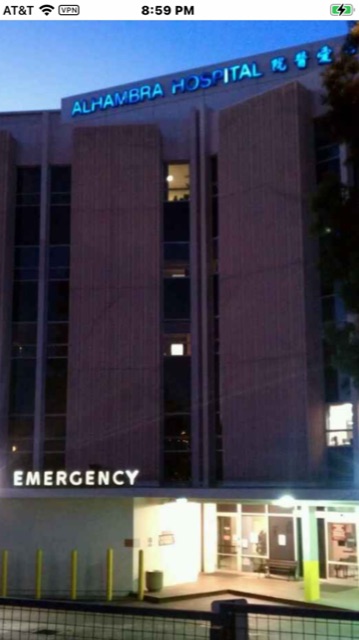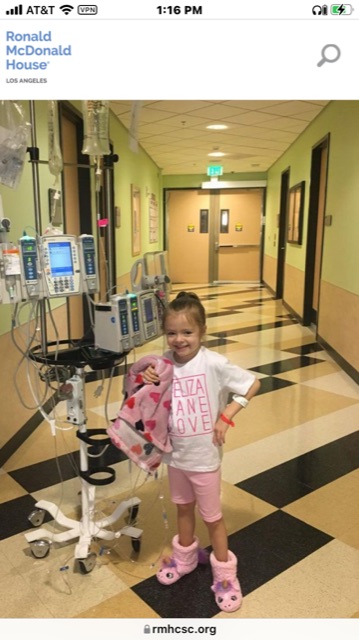Out of the Camp Ch.44 – Endings and More
I referred earlier in these musings to notions of the ground shifting beneath my feet and not, I should add, in relation to my presence in Southern California but rather, unconnected real-life events occurring simultaneously. It was the early 90s and the now slimmed-down UK business was bumping along in the North Sea and elsewhere from the sole office in Aberdeen when we received notification that our now largest client, British Gas, was terminating our Morcambe Bay contract as part of a policy to reduce the numbers of small service providers. This came as something of a blow but not a total surprise in the current climate of the time. It was immediately clear, however, that the loss of this, our now largest contract in the diminished offshore industry of the time, would render the UK operation unsustainable. As a result, it wasn’t too long after that when I flew back to the UK to wind up our last remaining British business. It really was a major setback as shortly before this I’d reached the conclusion that my plan for a marine communications/manpower business based in the LA/Long Beach Port was not to be, resulting in my abandoning the project. All of this occurred when we had decided to buy our first US property after having rented for three years. We liked the area that chance had led us to and so found a place just seven minutes away from our then current home.
So, here we were three years later, six thousand miles from home with my business enterprises either stillborn or having evaporated. I’d taken the precaution earlier of finding a job to help ‘tide us over’ until the port venture was established. This was the first time since my early 20s that I’d been employed rather than running my own business and it was the most depressing, dispiriting period of my life that I can remember. The company was a Florida-based national healthcare corporation and I’d been hired to develop and run a nursing agency, mainly supplying area hospitals with nurses, technicians and ancillary staff. I persevered in that nightmare for two long years, dealing with stupid, nonsensical bureaucratic nonsense enforced by a surfeit of bitter, unhappy and officious managers and supervisors. It got to the point one day where I could take no more of the bullying and voiced my observations on the pointless practices, ineffective regulations and inefficient processes enforced by a bevy of lazy and unqualified idiots. I was fired on the spot and told I should go back to where I came from if I didn’t like it here. I was so high that I didn’t bother responding but danced out of there happier than I’d been in many months.
It was about nine months after the UK business folded that in June 1994, the first domestic US DSS TV satellite, DirecTV-1 began broadcasting and I saw an opportunity in a brand-new sector of the consumer electronics industry. There was certainly an irony in this; I’d moved my family half-way round the world only to find I’d come full circle, back into the field I started out in twenty years earlier, only this time I’d be dealing with satellite dishes instead of traditional Yagi antennas (i.e. TV aerials). I began following the growth of the industry, monitoring the trade press and finding local dealers who would be carrying the new equipment and might have a requirement for field services. When speaking to store managers I wasn’t too optimistic as they either, weren’t really sure how this new technology was going to be received or alternatively, they already had installers who would handle this work. I had no doubt that this was going to be huge, based not only on the trade press but also the general media blanket coverage, which was without exception very positive, in contrast to the average consumer’s view of cable TV service back then. In addition to local independent retailers, I discovered that the largest national electronic outlets selling DirecTV were Radio Shack and Circuit City. It was time to bite the bullet, invest in a truck and equip it with tools and materials – including ladders – that I was going to need. This really was right back to square one. There was also the matter of a business license, registration with trade associations, certification came later when I acquired the requisite class of Contractors License. The first break I got was when a Radio Shack store manager told me that their installations were farmed out to a Woodland Hills company called Digitron. When I called them, I was invited to stop by and meet the manager – who turned out to be the company’s CEO! He told me that they were handling all of Radio Shack’s installation business nationwide, and were already busy, but anticipated further huge, rapid growth. At the time there was only one sub-contractor handling their Southern California installations and he was looking for additional support as the industry developed.
To cut a long, tedious narrative describing the step-by-step three-year transformation of my one-man-band into a twenty strong fleet of vehicles of both single and two-man crews. I’d followed a similar pattern to my development of the offshore business by monitoring the trade press, attending seminars and conventions, and seeking out potential outlets/retailers who were or were planning to market the new equipment. After about eighteen months we had four vehicles on the road serving a mere handful of national chains and one or two local dealers. In addition to this there were by this time national chains developing who’d farm out contract work to local contractors such as ourselves. Aside from proving legal business standing, these operators required sub-contractors to be properly licensed which required some brushing up on my modest electronic knowledge base in order to take and pass the State Contractors C7 Low Voltage Exam for the California Contractors’ License. There was an unforeseen benefit for us as it led to our providing design, installation and equipment supply for TV and radio showrooms in several Sears Department Store showrooms, and branches of a local department store, Curacao, back then known as La Curacao. Later, we also designed and installed satellite TV distribution systems in apartment buildings, motels, and a couple of large retirement communities. A Ronald McDonald House had recently been completed close to Los Angeles Children’s Hospital and we had the privilege of supplying the equipment and providing a team of technicians to wire up the house and install the satellite TV systems for families of children receiving treatment at the hospital. Coincidentally, another opportunity that occurred purely by chance was when Mary and I had taken a long weekend break and driven down to Ensenada, Mexico. I’d noticed on the drive a number of what were obviously electrical/electronics dealers advertising SKY Mexico Satellite TV systems with large, eye-catching mock-satellite displays on the sidewalks outside their showrooms. I’d heard of SKY TV in the UK of course but not this and so, naturally, ever on the look-out for a business opportunity, I was curious to learn more but as neither Mary nor I spoke Spanish I hesitated to stop and ask. However, one afternoon we were taking a walk in the town when we came across another of these displays, this time, outside a much larger establishment advertising, in addition to TV, radio etc., other domestic equipment such as telephone and alarm systems as well as white goods. I thought that, since this business was so much bigger, there might be a good chance someone would speak English, so I ventured in and before long was speaking to the business owner, Fernando, who turned out to be a really nice guy and was not only a retailer but also a regional distributor for SKY Mexico.
When I asked if Sky Mexico was available in the U.S., he said that it depended on where you were located as legally it wasn’t available there owing to territorial licensing and distribution restrictions but if you were close enough to the U.S.- Mexico border and you had the required equipment, you could receive it. He added that, actually, he knew of some Los Angeles-based Mexican immigrant families that were receiving SKY reception. As we stood in his showroom talking, I was glancing at the various TV screens all of which were showing different football (soccer) matches. In these early days of TV satellite in the U.S. there was no soccer available on any of the major networks, nor on satellite systems or even the well-established cable services. The exception to this were commercial firms who licensed specific games – usually major European tournament matches – at exorbitant rates for cable distribution in hotels, restaurants, and sports bars. I asked him about the soccer channels we were seeing in his showroom, and he explained that SKY had three Spanish language 24-hour soccer channels although, one of them, ESPN International was broadcast from Europe and the language stream could be switched to English on the receiver. I told him about my business and that there were thousands of Europeans and other nationalities living in and around Los Angeles that would happily pay dearly to get Soccer TV. In addition, the numerous British and Irish Pubs, and Sports Bars would jump at the opportunity to show these games. I noticed also that SKY had the BBC World TV channel which, strangely, wasn’t available in the U.S. at that time. This, I had no doubt, would also be of great interest to Brits living in the area.
We talked at length as to how we could work together to bring this idea to fruition, and he explained that he had an arrangement with one of his retailers in Tijuana who set up the accounts for customers based in the US. Indeed, I found out later that this dealer, a lady, had many existing US based customers mostly resulting from ads she had placed in Spanish language newspapers in the Southern California. A couple of days later when Mary and I left Ensenada, we had two SKY Mexico systems in the trunk, one I planned to set up as a demo unit in our Boyle Heights store, and the other I’d use at home to familiarize myself with the equipment and programming. It seemed that in no time at all I was making regular runs to Ensenada with a friend of one of my sons and bringing back ten systems each time. I’d started running ads in many of the European ex-pat newspapers and been overwhelmed by the response. I can’t remember now, all of the papers that existed in the mid 90s, and I expect many may have switched to online publications or have gone out of business but, in addition to the LA-based British Weekly, there was an Irish paper, actually two, also one for Italian immigrants, for French, German, Armenian and a few others I can’t remember. We ran ads in most of them and for the most part they all more than paid for themselves with the resulting business that they generated. I also got to know most of the pub landlords in the British and Irish pubs as they all, bar none, became faithful customers installing SKY systems in their various establishments.
As the SKY Mexico business developed, so did home satellite installations in general with more and more retailers selling DirecTV and later, DISH Network systems. The prior dominance in the industry of Circuit City and Radio Shack declined and they were both to cease trading a few years later. This resulted in such stores as Best Buy, Good Guys, Fry’s Electronics and a number of national, department store chains replacing them as our main customers. Also, the development of national installation networks and extended warranty insurance companies who sub-contract the installation and servicing of consumer electronics products to local businesses nationwide also became a major source of work for us. We’d normally receive bulk deliveries of equipment from distributors and/or installer networks once or twice monthly and actual work assignments would be faxed every morning for distribution to the installer crews. And so, every morning, the trucks would show up at our Boyle Heights base to pick up their paperwork including information on routes to be covered and the equipment to be installed and take off to embark on their days work. We’d cover a large swathe of Southern California including Ventura, Riverside, San Bernardino and San Diego Counties in addition to Orange County and Los Angeles. Of course, as the popularity of soccer in the US reached critical mass and soccer channels were added to programming in both cable and satellite markets, also to be picked up later up by certain national networks, the US demand for SKY Mexico from pubs and restaurants pretty-well collapsed. However, a relatively small number of Mexican immigrants and others prepared to pay premium rates for the Spanish language TV service continue subscribing to this day.
One morning in January 1999 I got up as usual, put the kettle on and made tea for myself and Mary; took her a cup into the bedroom, placed it on the nightstand and returned to the kitchen to have some breakfast before going to work. Mary, an RN, was working in homecare and often would work evenings, coming home often anywhere between 7 and 9pm so it was normal for her to sleep late on such occasions. As I was getting ready to leave, I returned to the bedroom to say goodbye when I realized that she hadn’t woken up. Then I saw a tiny red line of dried blood coming from her nose. I felt her and she was very cold. The rest of that day passed in a fog. My younger son, Andrew, mercifully was home and was an absolute tower of strength as the house erupted in what felt like an invasion with crowds of EMTs, paramedics and policemen taking over the house. I sat in the living room in a daze as the bedroom door was closed, leaving a single police officer standing outside the bedroom while the medics inside worked feverishly to resuscitate her. At one point an EMT came rushing out heading for the ambulance returning momentarily with a piece of equipment. Later, the head Paramedic emerged having a quiet word with the police officer who then left, and he then sat down and questioned me about Mary’s health. I wasn’t much help in that regard apart from mentioning that she’d had a cold and was sneezing violently the night before and complaining of a headache. Momentarily the bedroom door was flung open and several of the medics came out maneuvering the gurney awkwardly inside the house with Mary strapped on it while hooked up to an IV carried by another medic. The lead paramedic told me that they were taking her to the nearest hospital which was Alhambra and I could follow them there when I was ready. He also told me that he didn’t want to raise my hopes too high as her prospects didn’t look good but that they would do their absolute best for her.
